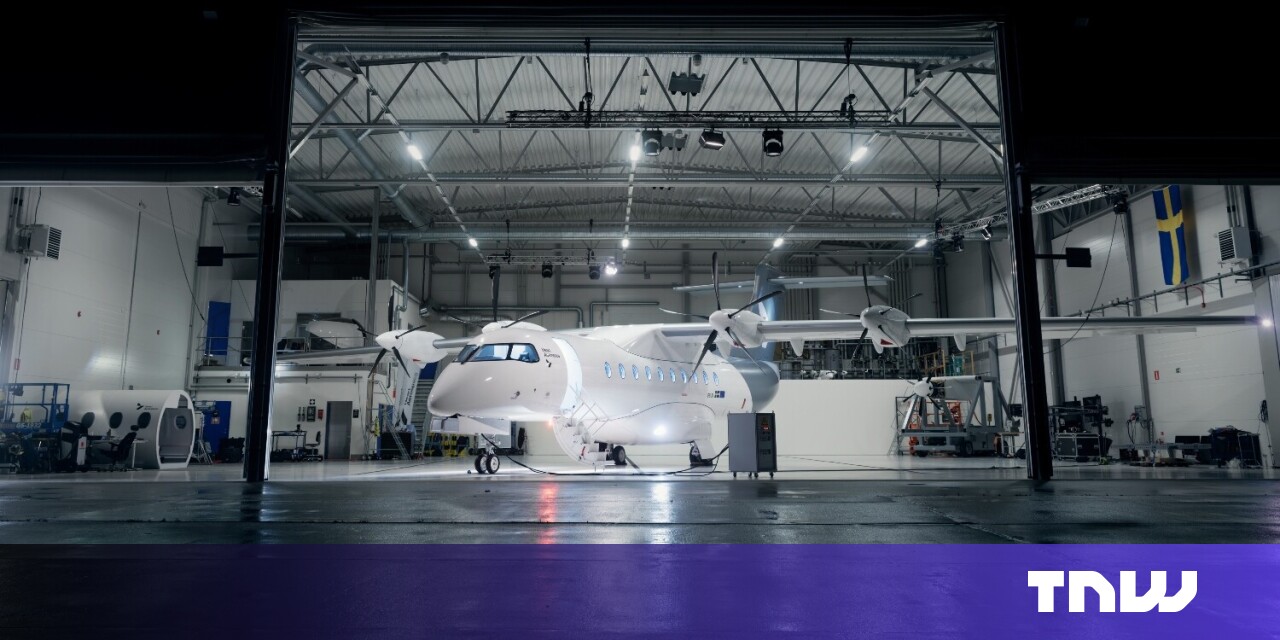Swedish startup Heart Aerospace has unveiled its first full-scale demonstrator hybrid-electric aircraft as it targets commercial flight by the end of 2029, a year later than previously planned.
Heart revealed the prototype, dubbed HX-1, at its hangar in Gothenburg yesterday, which we toured earlier this year.
The company will initially use the aircraft for ground-based testing, with the first flight scheduled for the second half of 2025 at the latest. It is set to be the largest electric plane to ever take to the skies.
“It is a testament to the ingenuity and dedication of our team that we’re able to roll out a 30-seat aircraft demonstrator with a brand-new propulsion system, [built] largely in house, in less than two years,” said Anders Forslund, co-founder and CEO of Heart Aerospace.


Heart X1 will serve as a springboard for the development of Heart’s hybrid-electric ES-30 aircraft. This hybrid-electric 30-passenger airliner will have a range of around 200km. Brussels to Amsterdam? No problem. And if needed, a reserve engine will boost the range to a maximum of 800km.
While that might not sound like a lot, almost a third of all flights in the EU cover less than 500km, according to Eurocontrol. The ES-30 could offer a cleaner alternative to short-haul flights on routes across the world.



Heart Aerospace has already secured 250 orders and 191 letters of intent for the ES-30 from the likes of United Airlines and Mesa Airlines. Scandinavian carrier SAS already started selling tickets for the first electric flights on the ES-30 last year.
Heart first targeted type certification (which allows for commercial flight) in 2028, but has now pushed that back to “the end of this decade.” The timeline delay doesn’t come as a huge surprise given the immense complexity and cost of building, and certifying, any new aircraft — let alone one powered by batteries.
But, even with the revised deadline,Heart has a lot of work to do if it is to deliver on time.
Development runway
After some ground testing in the coming weeks, the H-X1 will be dismantled and transported to the USA in preparation for its first flight. The exact flight destination is yet to be finalised, said Forslund during yesterday’s presentation.
The demonstrator features a composite fuselage and wing and, unlike the final version, is powered solely by four 400kW electric motors built by Italian firm Phase.


The next prototype, the HX-2, will introduce Heart’s own hybrid powertrain, combining electric motors and turboprop engines. H-X2 is scheduled for its first hybrid-electric flight in 2026.
Heart is now bringing battery development in-house to better integrate and optimise the technology for safety and performance, it said. The company is also focusing on developing control systems for hybrid powertrain management, part-funded by a $4.1mn grant from the US Federal Aviation Administration.
Heart eventually plans to establish a highly automated “pilot factory” for producing aircraft parts quickly and efficiently, aiming to build one plane per month initially. Long-term production goals include building up to one aircraft per week, said Forslund.
Heart, which employs over 130 people, has raised $145mn from the likes of Breakthrough Energy Ventures, the European Innovation Council, and EQT. However, Forslund describes the ES-30 as a “billion-dollar project.” The company said it will continue to pursue public and private funding to fuel its growth but isn’t sharing further details at this time.
Where Heart eventually sets up shop and builds its plane factory will largely depend on public subsidies, said Forslund. However, the company’s choice to test the HX-1 in the US, and its support from the FAA, may give a hint.

